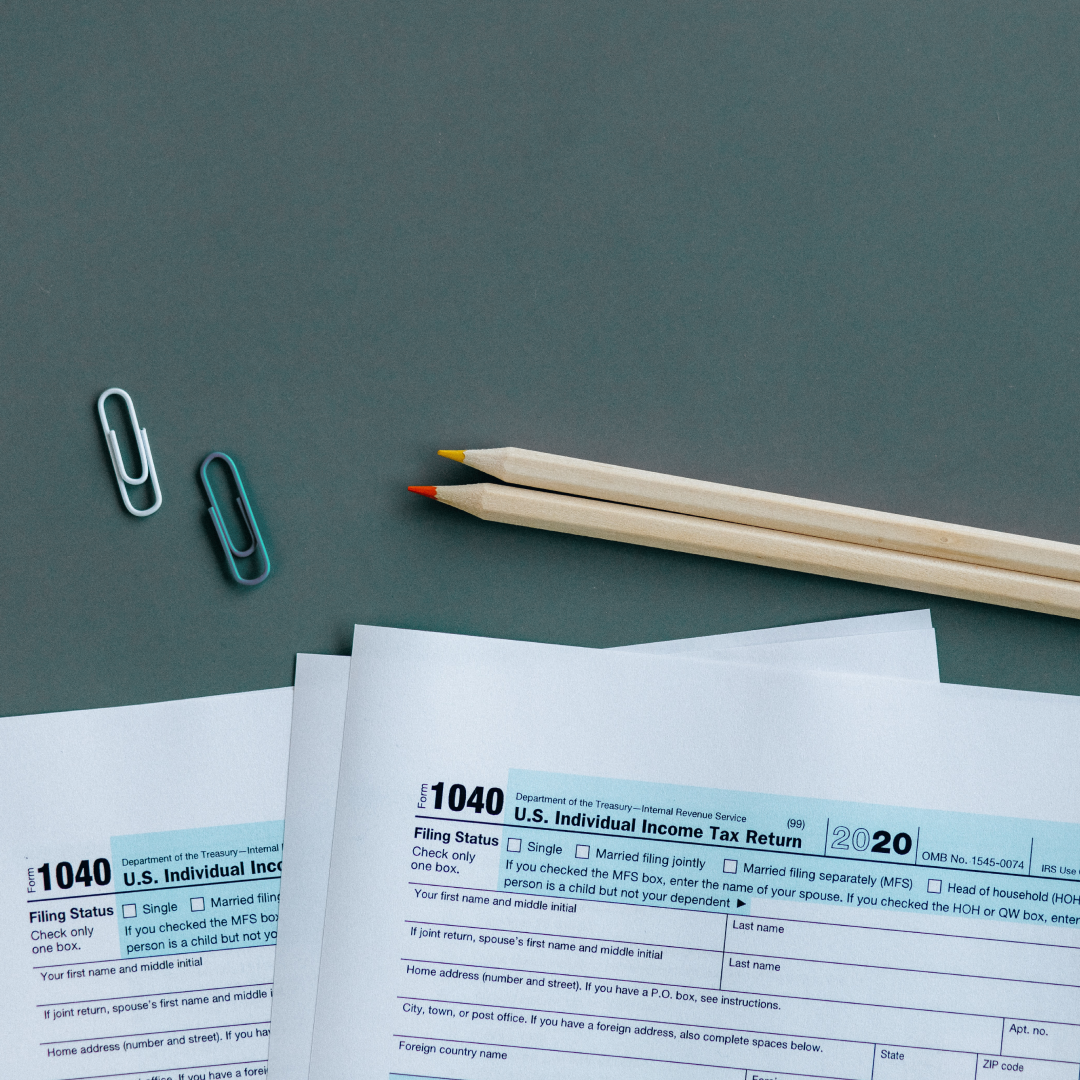What is A Tax Refund?

What would you do with $3,000? According to the Internal Revenue Service (IRS), that amount was the average tax refund for the 2021 tax year. But what is a tax refund, and who is eligible for one?
Tax refunds are common. In 2022, the IRS received over 145 million tax returns. From that number, 96 million — about 66% of the submitted returns — received refunds.
What is a tax refund?
Every year, you're required to pay taxes on your income and submit a federal income tax return. This money funds government programs, including Social Security, infrastructure projects, and other services.
How much you pay at tax time depends on several factors, such as your income, household size, and filing status. The IRS uses these factors to calculate your tax liability.
You can pay your taxes by withholding money from every paycheck or by making quarterly estimated tax payments. If you pay more than your tax liability, the extra money is returned to you in the form of a tax refund.
How does a tax refund work?
When you overpay on your taxes, you're essentially giving the government an interest-free loan. When you file your tax return in April, you can get that money back in a lump sum as a tax refund. But why would someone have a tax refund in the first place?
There are several reasons why someone would get a refund:
-
They may qualify for tax credits and deductions: Tax credits and tax deductions like the Earned Income Tax Credit or mortgage interest deduction can reduce how much you owe the government or lower your tax bill.
-
They miscalculated their withholdings: When you start a new job, you have to fill out Form W-4: Employee’s Withholding Certificate. This form tells your employer how much to withhold from your paycheck for taxes; if you withhold too much — a common problem for those that have multiple jobs or have had changes in their household size — you’ll qualify for a tax refund.
-
They may have miscalculated their estimated payments: Self-employed workers have to pay quarterly taxes throughout the year. It can be tricky since it’s based on what you expect to make for the year. If your income is less than you anticipated, you may end up overpaying and qualifying for a tax refund.
If you’d rather have more money each month rather than a refund, double-check your tax liability and withholdings. You can use the IRS’s tax withholding estimator tool to ensure you’re setting aside enough money for taxes.
State vs. federal tax refund
When it comes to your taxes, you may be eligible for a federal or state tax refund (or both!). In most states, residents are required to file a state income tax as well as a federal income tax return. If you overpay your state taxes, you could qualify for a refund of your state income taxes.
It is possible to qualify for a refund on one return but not the other. For example, you may find out that you overpaid your federal income taxes but underpaid your state income taxes. In that case, you'd get a federal tax refund, but you would owe your state additional income taxes.
While federal income taxes apply to everyone, the same is not true for state income taxes.
Not every state requires a state tax return; as of 2022, eight states have no personal income tax:
-
Alaska
-
Florida
-
Nevada
-
South Dakota
-
Tennessee
-
Texas
-
Washington
-
Wyoming
Tax credits and deductions
Tax credits and deductions are important ways to reduce your taxable income, lower your tax bill and boost your tax refund. But what's the difference between a tax credit and a deduction?
A tax credit reduces how much you owe the government with a dollar-for-dollar reduction of your tax liability. By contrast, a tax deduction reduces how much of your income is included in the calculation for income taxes.
Itemizing deductions used to be the only way to access certain credits and deductions, but now, the majority of taxpayers are eligible for the standard deduction. For the 2022 tax year — which applies to the tax return you’ll submit in April 2023 — the standard deduction is $25,900 for married couples that file joint returns. Single taxpayers and those that are married filing separately qualify for a deduction of $12,950
However, there are some valuable tax deductions and credits you can utilize, even if you claim the standard deduction. Here are five of the most common deductions and credits:
1. American opportunity tax credit (AOTC)
The AOTC is a credit students can receive during the first four years of higher education. The maximum value of the credit is $2,500, and income restrictions apply.
The AOTC is a refundable credit. If the credit reduces your bill to zero, you can have up to 40% of the remainder (up to a maximum of $1,000) refunded to you.
For example, let’s say you’re eligible for the full $2,500 credit and your tax bill is $1,500. After deducting the tax bill from the credit, the remainder is $1,000. Under the rules of the AOTC, you can have 40% of that remainder refunded to you, so you’d get $400.
2. Child tax credit
The child tax credit gives families a $2,000 credit for every dependent child under the age of 18.
Under the American Rescue Plan, the child tax credit was expanded for the 2021 tax year, giving families $3,600 for children ages five and under, and $3,000 for children ages six through 17.
To claim the child tax credit, you must fall within the credit’s income requirements and submit Form 1040 - U.S. Individual Income Tax Return with Schedule 8812, Credits for Qualifying Children and Dependents.
3. Earned income tax credit (EITC)
The EITC is a credit for low- to moderate-income households. Depending on your income and family size, the credit can be worth between $560 and $6,935.
The EITC is a refundable credit, so even if you don’t owe any taxes, you can still qualify for a tax refund.
4. Lifetime learning credit (LLC)
Like the AOTC, the LLC is a credit for individuals pursuing higher education that meet the credit’s income requirements. It is worth up to $2,000 per return, and there is no limit on how many years you can claim it. However, the tax credit is not refundable. If it brings your tax bill to zero, you cannot get the remainder as a refund.
5. Student loan interest deduction
With the student loan interest deduction, you can deduct up to $2,500 or the amount of interest you paid toward eligible loans, whichever is less. There are income restrictions for the deduction, so your income must fall within the deduction’s limits.
Tax refund on unemployment
If you received unemployment compensation during the tax year, you must include it as part of your gross income on your taxes. You can pay taxes on unemployment compensation by opting to have federal or state income taxes withheld from every check, or you can make quarterly estimated tax payments.
IRS tax refund schedule
Your federal income tax return is due April 15 each year. If that date falls on a weekend or legal holiday, the due date is moved to the next business day.
After submitting your return, the IRS will review your information. If you qualify for a tax refund, you can typically expect to receive it within three weeks. The IRS says it issues the vast majority of refunds in less than 21 calendar days.
If you submit a paper tax return or claim the EITC, it can take much longer for the IRS to process your return and issue you a refund. In fact, the IRS says it can take six months or more. To avoid lengthy waiting periods, try to submit your tax return electronically and opt for direct deposit to get your refund.
Tax refund tracker
If you’re expecting a refund, waiting for it to arrive can be frustrating. To help you track the status of your tax return and refund, the IRS created a tool called “Where’s My Refund?” The tool allows you to track the status of your refund for current and previous tax years. If you file your tax return electronically, you can start using the tracker 36 hours after your submission.
The views expressed are generalized and may not be appropriate for all investors. Investing involves risk, including the loss of principal. Carefully consider your financial situation, including investment objective, time horizon, risk tolerance, and fees prior to making any investment decisions. Acorns is not engaged in rendering any tax, legal, or accounting advice. Please consult with a qualified professional for this type of advice.









